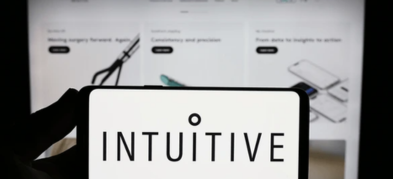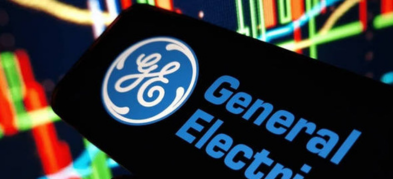
Ultima Markets App
Trade Anytime, Anywhere
Important Information
This website is managed by Ultima Markets’ international entities, and it’s important to emphasise that they are not subject to regulation by the FCA in the UK. Therefore, you must understand that you will not have the FCA’s protection when investing through this website – for example:
- You will not be guaranteed Negative Balance Protection
- You will not be protected by FCA’s leverage restrictions
- You will not have the right to settle disputes via the Financial Ombudsman Service (FOS)
- You will not be protected by Financial Services Compensation Scheme (FSCS)
- Any monies deposited will not be afforded the protection required under the FCA Client Assets Sourcebook. The level of protection for your funds will be determined by the regulations of the relevant local regulator.
Note: Ultima Markets is currently developing a dedicated website for UK clients and expects to onboard UK clients under FCA regulations in 2026.
If you would like to proceed and visit this website, you acknowledge and confirm the following:
- 1.The website is owned by Ultima Markets’ international entities and not by Ultima Markets UK Ltd, which is regulated by the FCA.
- 2.Ultima Markets Limited, or any of the Ultima Markets international entities, are neither based in the UK nor licensed by the FCA.
- 3.You are accessing the website at your own initiative and have not been solicited by Ultima Markets Limited in any way.
- 4.Investing through this website does not grant you the protections provided by the FCA.
- 5.Should you choose to invest through this website or with any of the international Ultima Markets entities, you will be subject to the rules and regulations of the relevant international regulatory authorities, not the FCA.
Ultima Markets wants to make it clear that we are duly licensed and authorised to offer the services and financial derivative products listed on our website. Individuals accessing this website and registering a trading account do so entirely of their own volition and without prior solicitation.
By confirming your decision to proceed with entering the website, you hereby affirm that this decision was solely initiated by you, and no solicitation has been made by any Ultima Markets entity.
I confirm my intention to proceed and enter this website Please direct me to the website operated by Ultima Markets , regulated by the FCA in the United KingdomHow to Spot Forex Scam?
Forex trading attracts millions due to its profit potential and 24 hour market access. However, this popularity has also made it a prime target for scammers. Knowing how to spot forex scams is essential for protecting your capital. But before diving into the red flags, it’s important to understand the definition of a forex scam so you can identify one early.
What is Forex Trading Scams?
A Forex trading scam is a fraudulent scheme that targets traders by promising unrealistic returns through foreign exchange trading. These scams often involve unlicensed brokers, fake managed accounts, signal-selling groups with no track record, social media impersonators who aim to steal money rather than provide genuine trading services.
Scammers may pose as legitimate brokers or professional traders and use tactics like fake testimonials, manipulated trading results, and aggressive sales pitches. The goal is usually to get victims to deposit funds that are never actually traded or to block withdrawals entirely. According to the Commodity Futures Trading Commission (CFTC), thousands of retail traders fall victim to such scams annually.
Understanding what a forex scam is can help you spot warning signs early and protect yourself from financial loss.

Forex Scam Signals You Should Never Ignore
Knowing how to spot a forex scam starts with identifying key red flags. Below is a list of common forex scams every trader should be aware of:
Signal Seller Scams
Some individuals or community sell trading signals, trade recommendations they claim will deliver high returns. While certain signal services are legitimate, many are scams that offer unverified or poor-quality signals, risking substantial losses for unsuspecting users.
Red Flags:
- Claims of guaranteed profits or high success rates with no risk
- No proof of performance or backtested results
- Urgency tactics like “limited-time discounts” to pressure fast sign-ups
- Imbalanced trade setups—huge stop-loss and tiny take-profit targets
How to Protect Yourself:
- Ask for Verified Results: Look for audited performance or long-term transparency. Try demo testing before real money.
- Check Independent Reviews: Use reputable forums and platforms to evaluate feedback. Look for consistent user complaints or red flags.
Ponzi and Pyramid Investment Schemes
These scams rely on recruiting new traders to pay returns to older ones—disguised as profits. They often collapse once new inflows stop, leaving most participants with losses.
Red Flags:
- Unrealistic returns with no real explanation of how they’re generated
- Focus on recruitment instead of real trading or strategy
- Vague business models and undisclosed fund usage
How to Protect Yourself:
- Review the Structure: If earnings depend mostly on bringing in new people rather than trading success, it’s likely a pyramid scheme.
- Verify Regulatory Status: Real investment programs are licensed and monitored. Always check with official financial authorities.
Fake Brokers and Boiler Room Scams
Fake brokers pose as real trading platforms but steal client funds or manipulate trades. Some even copy the branding of real firms to appear trustworthy. A related variation is the boiler room scam, where aggressive sales agents pressure traders to deposit quickly.
Red Flags:
- Unsolicited calls/emails offering “exclusive” investment deals
- High-pressure tactics, including threats of missing out
- Withdrawal issues—delays, denials, or endless excuses
- Abnormal trading conditions—huge spreads, slippage, or price manipulation
- No clear information on licensing or regulation
How to Protect Yourself:
- Verify Licenses: Use official regulator sites (e.g., FCA, ASIC) to confirm a broker’s legal status—not just what’s on their website.
- Research Background: Look into company details, age of the website, user reviews, and any regulatory warnings.
- Test Withdrawals: If already registered, try a small withdrawal. Scammers usually block or delay payouts.
High-Yield Investment Programs (HYIPs)
These schemes offer extremely high returns under the guise of forex, crypto, or other high-risk investing. However, returns are usually paid from new investor funds rather than any real trading, making them modern-day Ponzi schemes.
Red Flags:
- “Guaranteed” double-digit returns in days or weeks
- No clear explanation of how trades generate profits
- Changing terms or hidden fees that aren’t explained upfront
How to Protect Yourself:
- Compare Return Promises: If returns seem too good to be true, they usually are. Cross-check with real market conditions.
- Check Watchlists: Use government or regulatory websites to search for scam alerts or unregistered entities.
Automated Trading Robot Scams
These scams involve software or trading bots that claim to automatically generate profits. Some don’t work at all, while others deliberately lose trades. Often, the robot is bundled with a fraudulent broker that profits from user losses.
Red Flags:
- Unrealistic marketing—“100% win rate” or “hands-free profit”
- No insight into the algorithm or strategy behind the bot
- High setup or subscription fees with no track record
How to Protect Yourself:
- Request Demo Account: Reputable providers offer demo trials so you can evaluate real performance.
- Use Independent Review Sites: Look for verified user experiences and expert reviews—not just testimonials on the vendor’s page.
How to Avoid Forex Scams?
Here are trader-proven steps on how to avoid forex scams:
Verify Broker Regulation
Always confirm a broker’s license on the regulator’s official website. Most regulators have public license databases.
Research Online Reviews (but be cautious)
While reviews can offer insight, some are paid or fake. Use forums like Forex Peace Army or Trustpilot, and check for consistent complaints.
Use a Demo Account First
Test the broker’s platform, spreads, and customer service before depositing real money.
Be Skeptical of Social Media Promises
Scammers often impersonate legitimate brokers or traders on platforms like Instagram, Facebook, and Telegram.
Don’t Share Private Keys or Login Credentials
Even if it appears the request comes from support, no real broker will ask for full login credentials or wallet access.
How to Report Forex Scams
If you suspect you’ve encountered a forex scam, it’s important to act quickly and report it to the relevant financial authorities. Start by gathering all evidence, including emails, chat logs, transaction receipts, platform screenshots, and account details. In most countries, financial regulators have official channels for submitting complaints or reports against fraudulent brokers or investment schemes.
For example, traders in the United States can report scams to the Commodity Futures Trading Commission (CFTC) or the National Futures Association (NFA), while those in the UK should contact the Financial Conduct Authority (FCA). In Australia, reports can be submitted to the Australian Securities and Investments Commission (ASIC).
Reporting the scam not only increases your chances of recovering funds (if possible), but also helps authorities investigate and shut down fraudulent operations, preventing others from falling victim.
Conclusion
Understanding how to spot forex scams is crucial for anyone participating in currency trading. Whether you’re a beginner or an experienced trader, always trade with regulated brokers, avoid unrealistic promises, and remain alert online. In a market where trust and transparency are everything, staying informed is your best protection.
Disclaimer: This content is provided for informational purposes only and does not constitute, and should not be construed as, financial, investment, or other professional advice. No statement or opinion contained here in should be considered a recommendation by Ultima Markets or the author regarding any specific investment product, strategy, or transaction. Readers are advised not to rely solely on this material when making investment decisions and should seek independent advice where appropriate.












